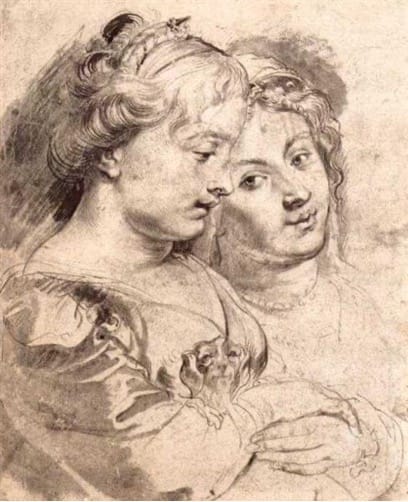Rubens, Re-evaluated

By Joel Bennet, BSc Politics, Philosophy and Economics
The role of the controversial baroque master Peter Paul Rubens is critically re-evaluated in the new feature exhibition at the Dulwich Picture Gallery. Curators Dr Amy Orrock and Ben Van Benden offer a unique insight into the real-life female influences on Rubens, thus challenging the notion that he only painted a single ‘type’ of woman, and therefore redefining his work for a modern audience.
“Rubens, while painting to reflect his personal ideas and perceptions, challenged the societal prescription of what it meant to appear as a female.”
To the public, Rubens occupies a peculiar space as ‘the artist who painted women’. While this is not an incorrect assessment, it is most definitely an understatement. Throughout his career, he painted his wife more than other artists of his time painted women in the totality of their work. He was not only quantitatively, but qualitatively revolutionary, depicting the female form in a way that was unprecedented at the time. It features a break from the austere, restrained figure so commonplace among his contemporaries, and instead celebrated natural form. By emphasising the innate connection between the female being and the world, these individuals were ontologically present in the same capacity as a man. Furthermore, he celebrated and recognised the struggle and triumph of women, albeit in the role’s patriarchal presupposition; he commonly inserted his wife through allegory in historical paintings, spotlighting her maternity. Rubens, while painting to reflect his personal ideas and perceptions, challenged the societal prescription of what it meant to appear as a female. He undermined some of the power of men to give and take away beauty by essentialising it within his female depiction.
Critique can also reasonably be laid at the door of praise. While Rubens was undoubtedly progressive for his time, he is a product of his era – an era in which women did not have a direct say in their own depictions, and one in which discourse was limited to men of means. Rubens is often accused of maintaining the role of women as subservient sexual objects, just with a different aesthetic. Upon consulting the popular discourse of his work, it is understandable that this is a well-subscribed belief; the idea of the ‘Rubenesque’ women is a one-dimensional image of idealised beauty, a product of androcentric reflection on Ruben’s work. In actuality, Rubens highlighted the importance of nuance. The term ‘Rubenesque’ as an archetype in itself is arguably the antithesis of his intentions. A more accurate portrayal of his work would, in fact, be a challenge to the established archetypes of women in art. His work encouraged a new naturalism, which sought in equal measure to present idealistic imagery and real depictions of real women, a fact often ignored or simply unknown in popular discussion. Rubens painted a vast plethora of female subjects – from his wife, to the gilded ladies of Europe, to the heroines of Catholic religious canon. His breadth of subject is a testament to an eclectic, misunderstood artist who is finally given a fair trial in this exhibition.
Rubens and Women, Dulwich Picture Gallery SE21 7AD, £16 Entry, 27 September 2023 – 28 January 2024.
Photo Caption: ‘Two Women with a Dog’ – 1616-1618 [Credit: Wikiart]



